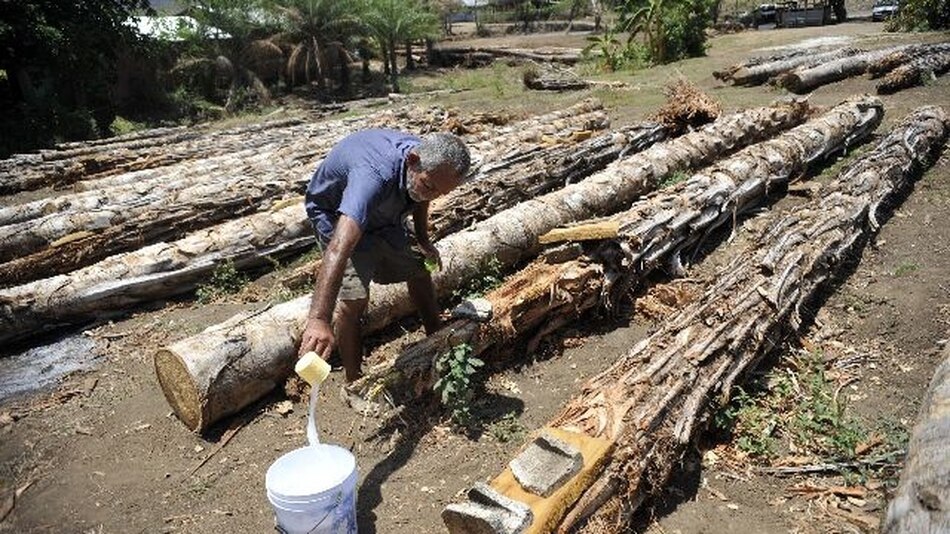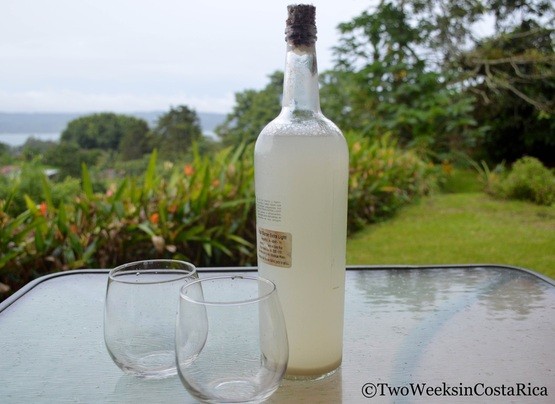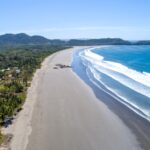Few expat retirees know what is vino de coyol
I always make it point to publish articles about Costa Rica’s history, language and culture to help anyone who is thinking of relocation here.
Vino de coyol is a alcoholic beverage that has been popular in the Nicoya region of Costa Rica for more than 200 years. Between December and April a watery sap like substance is extracted from the coyol palm. The palm has to mature for at least seven to ten years before its sap can be extracted. During this time it can grow to about 18 to 21 feet high.
To obtain the liquid from the trunk of the palm, a small hole is made in the upper part of its trunk which is softer. Little by little the liquid comes out and is collect in glasses and then put into buckets. There are several types of sap that are extracted. One has a sweet flavor and tastes like coconut water (called agua de pipa here) and since it does not have contain alcohol, will not make you drunk. It is beneficial to the body because it contains iron, potassium and calcium according to researchers at the University of Costa Rica (UCR). Supposedly, it can lower high blood pressure, and help digestion, although these claims have not been proven scientifically. One 63-year old from the Nicoya region claims to be in perfect health thanks to drinking vino de coyol in moderation.

Another version of this beverage is fermented and contains alcohol that is sure to make anyone who drinks enough of it very drunk. The longer the fermentation process, the stronger it becomes.
There are couple of myths associated with this unique beverage. Supposedly, if a person drinks it while in the sun the effects are much stronger. According to those who produce it, this is absolutely not true. However, if you have a hangover (called una goma) caused by this liquor and find yourself under the sun, in some instances it will cause you to feel drunk all over again. Another myth is that those who imbibe too much of this beverage for the first time and who experiences its terrible hangover (un gomón), may be reluctant to ever try again.

Don’t look for vino de coyol on the shelves of your supermarket because it is basically a home-brewed product and only sold by a few producers (called coyoleros)who live in the Nicoya area.
Sadly, the los coyoleros report that the tradition is dying out. In the past the locals would gather in restaurants and down many bottles of this unique liquor while recounting legends and stories from the Guanacaste region’s colorful past.



